
How to Use 24/12 Buck Converter: Examples, Pinouts, and Specs
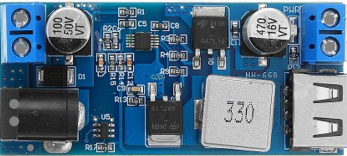
 Design with 24/12 Buck Converter in Cirkit Designer
Design with 24/12 Buck Converter in Cirkit DesignerIntroduction
The 24/12 Buck Converter is a DC-DC step-down voltage regulator designed to efficiently convert a 24V input to a stable 12V output. This component is widely used in applications where a lower voltage is required to power devices or circuits from a higher voltage source. Its high efficiency ensures minimal power loss, making it ideal for battery-powered systems, automotive electronics, industrial equipment, and embedded systems.
Explore Projects Built with 24/12 Buck Converter
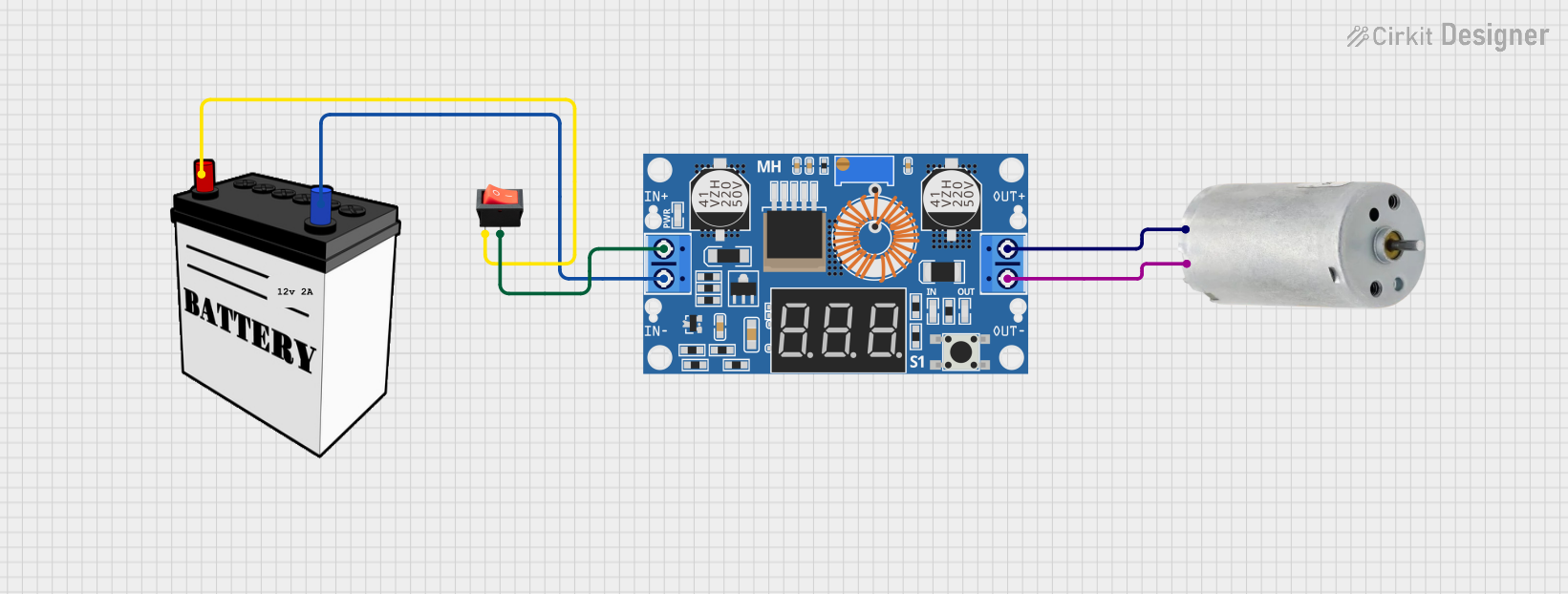
 Open Project in Cirkit Designer
Open Project in Cirkit Designer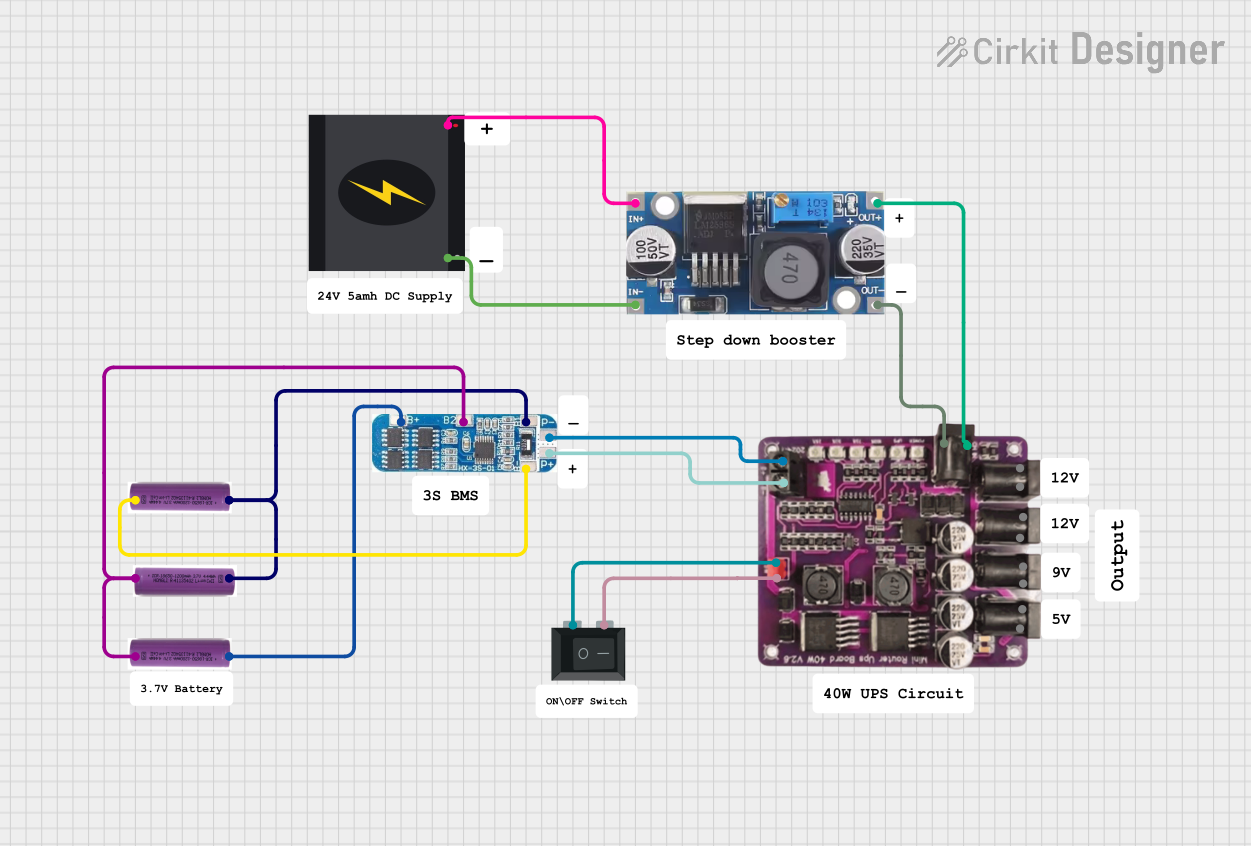
 Open Project in Cirkit Designer
Open Project in Cirkit Designer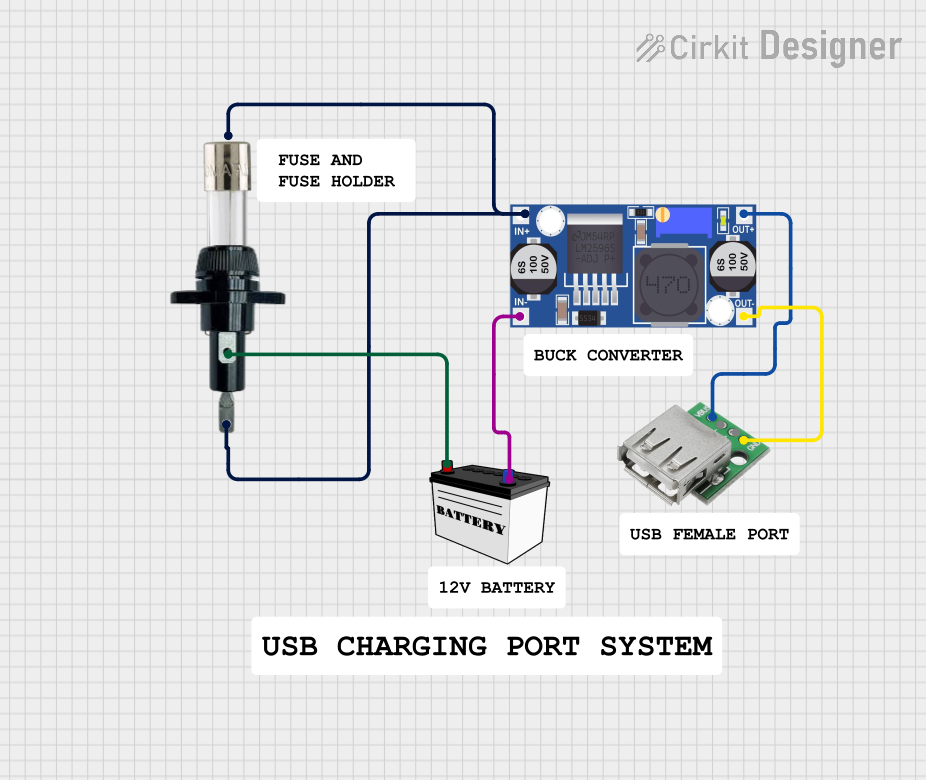
 Open Project in Cirkit Designer
Open Project in Cirkit Designer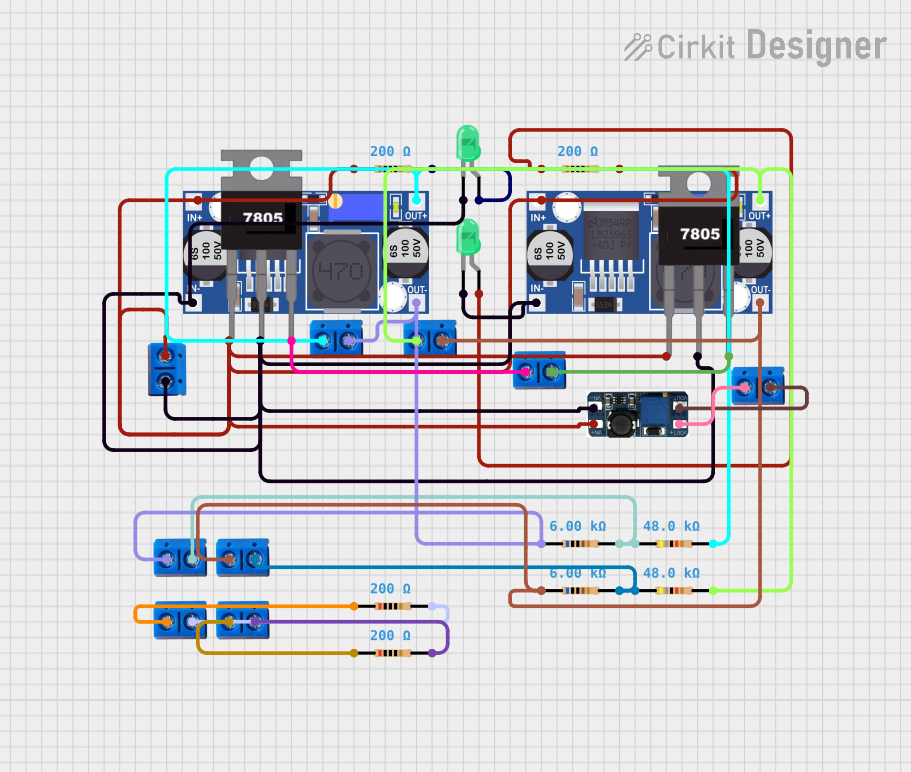
 Open Project in Cirkit Designer
Open Project in Cirkit DesignerExplore Projects Built with 24/12 Buck Converter

 Open Project in Cirkit Designer
Open Project in Cirkit Designer
 Open Project in Cirkit Designer
Open Project in Cirkit Designer
 Open Project in Cirkit Designer
Open Project in Cirkit Designer
 Open Project in Cirkit Designer
Open Project in Cirkit DesignerCommon Applications
- Powering 12V devices (e.g., fans, LEDs, sensors) from a 24V power source
- Automotive systems where 24V truck batteries need to power 12V accessories
- Industrial control systems requiring multiple voltage levels
- Renewable energy systems, such as solar setups, for voltage regulation
Technical Specifications
The following table outlines the key technical details of the 24/12 Buck Converter:
| Parameter | Value |
|---|---|
| Input Voltage Range | 18V to 36V |
| Output Voltage | 12V ± 0.5V |
| Maximum Output Current | 5A |
| Efficiency | Up to 95% |
| Switching Frequency | 150 kHz |
| Operating Temperature | -40°C to +85°C |
| Protection Features | Overcurrent, Overtemperature, |
| and Short-Circuit Protection | |
| Dimensions | 50mm x 25mm x 15mm |
Pin Configuration
The 24/12 Buck Converter typically has the following pin layout:
| Pin Name | Description |
|---|---|
| VIN | Positive input voltage (18V to 36V) |
| GND | Ground connection for input and output |
| VOUT | Regulated 12V output voltage |
| EN (optional) | Enable pin to turn the converter on/off |
Usage Instructions
How to Use the 24/12 Buck Converter in a Circuit
- Connect the Input Voltage:
- Attach the VIN pin to a 24V DC power source.
- Connect the GND pin to the ground of the power source.
- Connect the Output Load:
- Attach the VOUT pin to the positive terminal of the load requiring 12V.
- Connect the GND pin to the ground of the load.
- Enable the Converter (if applicable):
- If the converter has an EN (Enable) pin, ensure it is connected to a logic HIGH signal (e.g., 3.3V or 5V) to activate the converter. Leave it unconnected or pull it LOW to disable the converter.
- Verify Connections:
- Double-check all connections to ensure proper polarity and secure wiring.
- Power On:
- Turn on the 24V power source. The converter will step down the voltage to 12V and supply it to the connected load.
Important Considerations and Best Practices
- Input Voltage Range: Ensure the input voltage remains within the specified range (18V to 36V). Exceeding this range may damage the converter.
- Heat Dissipation: For high-current applications, ensure adequate ventilation or use a heatsink to prevent overheating.
- Load Requirements: Do not exceed the maximum output current of 5A to avoid triggering overcurrent protection.
- Noise Filtering: If the output voltage has noticeable noise, consider adding a capacitor (e.g., 100µF electrolytic) across the output terminals for additional filtering.
- Polarity Protection: Use a diode in series with the input to protect against reverse polarity connections.
Example: Using the 24/12 Buck Converter with an Arduino UNO
The 24/12 Buck Converter can be used to power an Arduino UNO from a 24V power source. Below is an example circuit and code:
Circuit Connections
- Connect the VIN pin of the Buck Converter to the 24V power source.
- Connect the GND pin of the Buck Converter to the ground of the power source.
- Connect the VOUT pin of the Buck Converter to the 5V pin of the Arduino UNO (via a 12V-to-5V linear regulator, if needed).
- Connect the GND pin of the Buck Converter to the GND pin of the Arduino UNO.
Arduino Code Example
// Example code to blink an LED using an Arduino UNO powered by a 24/12 Buck Converter
const int ledPin = 13; // Pin connected to the onboard LED
void setup() {
pinMode(ledPin, OUTPUT); // Set the LED pin as an output
}
void loop() {
digitalWrite(ledPin, HIGH); // Turn the LED on
delay(1000); // Wait for 1 second
digitalWrite(ledPin, LOW); // Turn the LED off
delay(1000); // Wait for 1 second
}
Troubleshooting and FAQs
Common Issues and Solutions
No Output Voltage:
- Cause: The EN pin is not connected or is pulled LOW.
- Solution: Connect the EN pin to a logic HIGH signal (e.g., 3.3V or 5V) or leave it unconnected if it has an internal pull-up resistor.
Overheating:
- Cause: Excessive current draw or poor ventilation.
- Solution: Ensure the load does not exceed 5A. Use a heatsink or improve airflow around the converter.
Output Voltage Fluctuations:
- Cause: Insufficient input voltage or high output noise.
- Solution: Verify the input voltage is stable and within the specified range. Add a capacitor across the output terminals for noise filtering.
Short-Circuit Protection Triggered:
- Cause: A short circuit on the output terminals.
- Solution: Disconnect the load, check for shorts, and reconnect only after resolving the issue.
FAQs
Q: Can I use the 24/12 Buck Converter to power a 12V motor?
A: Yes, as long as the motor's current draw does not exceed 5A. For motors with high inrush currents, consider using a converter with a higher current rating.
Q: Is the converter suitable for outdoor use?
A: The converter itself is not weatherproof. If used outdoors, ensure it is enclosed in a weatherproof housing.
Q: Can I adjust the output voltage?
A: Most 24/12 Buck Converters have a fixed output voltage. If adjustable output is required, look for a model with a potentiometer or feedback pin for voltage adjustment.
Q: What happens if the input voltage drops below 18V?
A: The converter may stop regulating properly, and the output voltage could drop below 12V or become unstable. Ensure the input voltage remains within the specified range.